What is Needed for Steering Control on a PWC: Essential Guide and Tips
Personal watercrafts (PWCs), popularly known as jet skis or wave runners, have gained immense popularity as a thrilling and adventurous water activity. Riding a PWC requires an understanding of its various components and how they work together for effective steering control. To fully enjoy the experience and ensure safety, a rider must be familiar with the steering system, the role of throttle and balance, and the key components that contribute to successful PWC operation.

The steering system of a PWC consists of a handlebar, cables, and a steering nozzle. It is essential to maintain proper control and freedom while riding. The handlebar serves as the primary point of contact to steer the PWC in the desired direction. When powered, the throttle and jet propulsion system of the PWC have a direct impact on its steering control. Releasing the throttle, idling, or shutting off the engine can result in a loss of steering control, making it important for riders to understand the relationship between power and handling.
Key Takeaways
- A PWC's steering system involves a handlebar, cables, and a steering nozzle for precise control.
- Maintaining throttle and engine power is crucial for effective steering and safety.
- Familiarity with PWC components and personal skills contribute to better steering control and a more enjoyable ride.

Understanding PWC and its Importance
Personal Watercraft (PWC), often referred to as Jet Skis, Sea-Doos, or even jet boats, are small watercraft designed for recreational use. These versatile machines offer a unique and thrilling experience on the water. It's essential for users to understand their operation and the importance of steering control to ensure a safe and enjoyable experience.
PWC are typically powered by jet engines, propelling the watercraft through the water at high speeds. This propulsion system differentiates PWC from other boats, as it eliminates the need for a rudder or propeller. Steering control on a PWC primarily relies on engine power. As a result, maintaining power is crucial for maneuverability and control.

The design of PWC allows for incredible agility on the water, making them ideal for various activities, including racing, freestyle riding, and exploring open waters. Due to their compact size, PWC are also convenient to transport and easy to maneuver both on and off the water. However, the combination of power and compact design requires riders to be cautious and attentive to their surroundings.
Steering control on a PWC is directly tied to the engine's power. If the throttle is released, the engine goes idle, or the engine shuts off, riders may lose all steering control, as outlined on Boat Ed. It's crucial for riders to maintain power and be prepared to react quickly to changing conditions or potential hazards on the water.
In conclusion, understanding the PWC's unique characteristics and the importance of steering control is essential for enjoying recreational activities safely. With proper knowledge and practice, PWC enthusiasts can experience the water's thrill while maintaining the necessary control to navigate through various conditions.
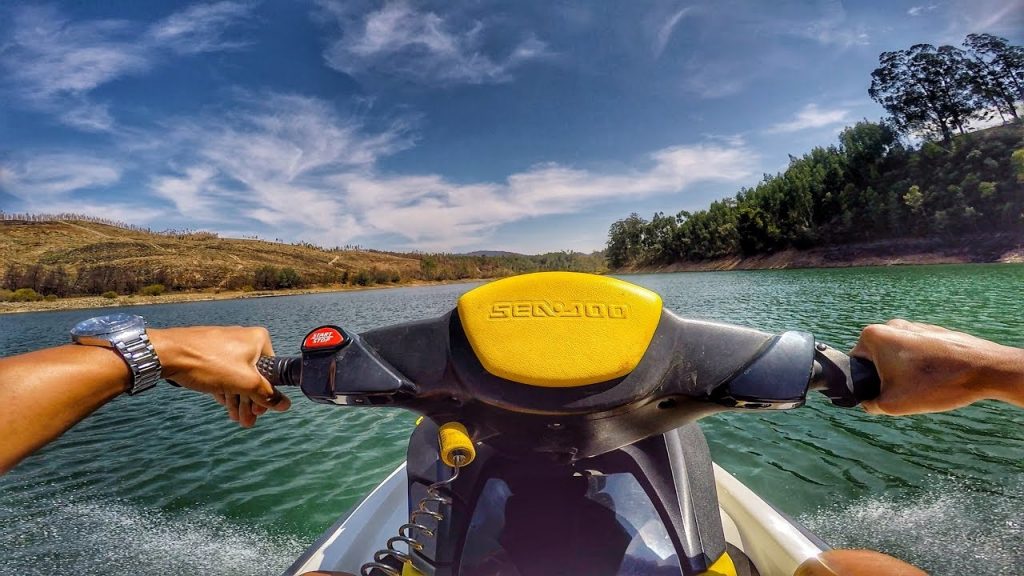
The Steering System on a PWC
Personal Watercraft (PWC) steering systems are critical for maneuvering and handling the craft on the water. The main components of a PWC steering system include the steering control, steering wheel, rudder, steering cables, steering components, steering mechanisms, and steering nozzle.
The principal feature of a PWC steering system is the steering control, which is typically a handlebar. The operator steers the PWC by moving the handlebar, which in turn changes the angle of the jet nozzle. A PWC can make a complete 360-degree turn within its length at idle speed [^1^] (https://lionparts.com/blogs/news/steering-your-pwc-what-is-needed-for-steering-control-on-a-pwc).
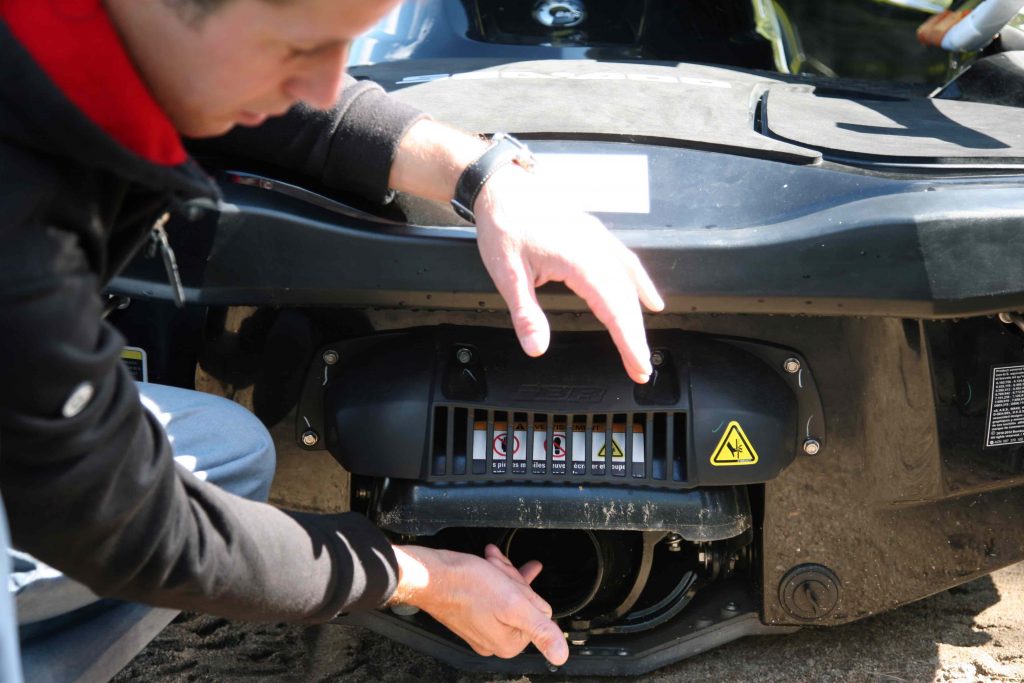
Instead of using rudders like traditional boats, PWCs are propelled by a jet drive. Water is drawn into a pump and then forced out under pressure through a steering nozzle at the back of the unit [^2^] (https://www.boat-ed.com/pennsylvania/studyGuide/Steering-and-Stopping-a-PWC/10103902_44839/). The steering nozzle directs the pressurized water jet and determines the direction of the craft. Hence, steering in PWCs depends on the propulsion mechanism itself.
The steering cable is another essential component of the steering system. It connects the steering control to the steering nozzle, allowing the operator to control the direction of the jet of water. To maintain proper steering control on a PWC, it is crucial to regularly check and, if necessary, adjust the steering cable [^3^] (https://lionparts.com/blogs/news/steering-your-pwc-what-is-needed-for-steering-control-on-a-pwc).
The steering system also comprises various smaller components and mechanisms that ensure the smooth and precise operation of the controls. These can include bearings, bushings, and lubrication points.

In summary, the steering system on a PWC is a critical aspect of its operation, utilizing a unique jet propulsion mechanism for navigation. The main components of the steering system, such as the steering control, steering nozzle, and steering cable, work together to provide an operator with safe and accurate control of the craft. Regular maintenance and inspection of these components are important to ensure optimal steering performance.
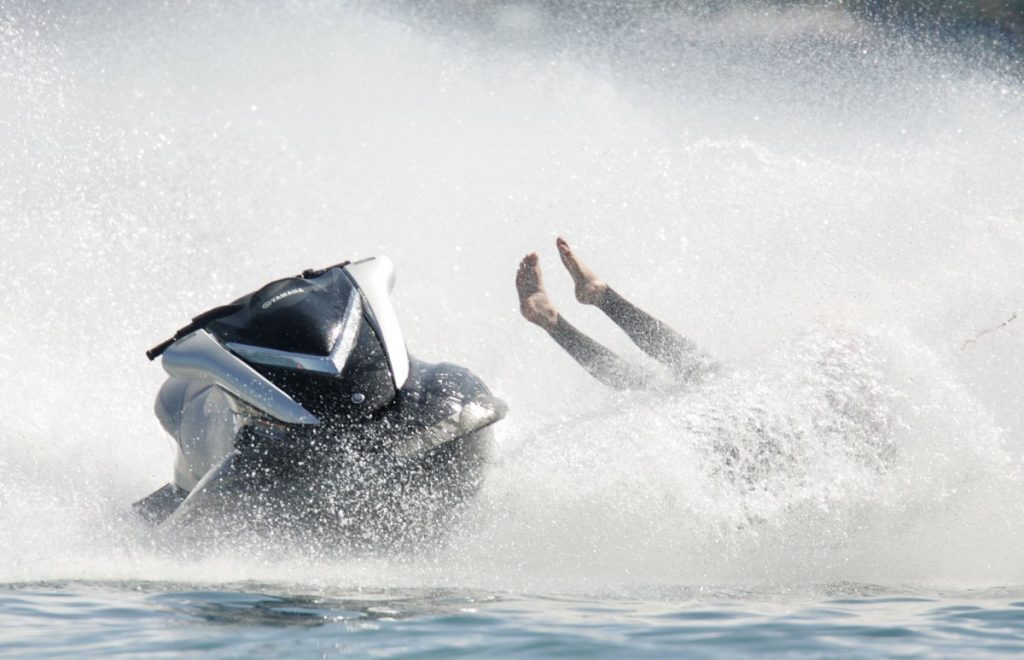
Impact of Throttle and Balance
The throttle and balance play crucial roles in the steering control of a personal watercraft (PWC). The throttle controls the engine's power, which directly affects the PWC's speed and ability to steer. Maintaining balance on the PWC is essential for stability and making smooth turns.
To maintain steering control, it is vital not to disengage the throttle while maneuvering the PWC. If the throttle is released or if the engine shuts off, it will no longer be possible to control the steering because it is tied to the engine's power. This is an important safety aspect to keep in mind while operating a PWC.
Operating a PWC requires more than just idle speed for steering control. It is necessary to engage the throttle and switch out of neutral to have the ability to navigate through the water effectively. Idle speed is not enough to maintain the necessary control for safe and efficient operation.

Aside from throttle control, maintaining balance while operating a PWC is essential for proper steering. Distributing weight evenly on the PWC can improve stability and ensure better maneuverability. When making turns, riders should shift their body weight smoothly to maintain balance and ensure the PWC stays on course.
In conclusion, understanding the impact of throttle and balance is crucial for safe PWC operation. Utilizing proper throttle control, staying out of neutral, and maintaining balance are all essential factors in achieving optimal steering control and ensuring a enjoyable experience on the water.

Controlling a PWC
Operating a personal watercraft (PWC) requires an understanding of the mechanisms in place for steering control. The key to maneuvering a PWC lies in the relationship between its steering system and the jet propulsion system. A jet drive propels the PWC by drawing water into a pump and forcing it out under pressure through a steering nozzle at the back of the unit. The pressurized water jet is directed by the steering control, allowing the operator to turn the PWC by adjusting the handlebars in the desired direction source.
There are two main types of steering systems found in PWCs: cable steering and electronic systems. Cable steering systems utilize mechanical cables to transmit the movement of the handlebars to the steering nozzle or jet pump. This type of system offers a direct and responsive feel, which enables precise control over the PWC's maneuverability source. On the other hand, some modern PWCs employ electronic steering systems, also known as fly-by-wire systems. These systems provide enhanced control and may offer additional features, such as adjustable steering sensitivity levels.

It's critical to remember that when operating a PWC, maintaining steering control is directly tied to the engine being powered. If the operator releases the throttle, puts the PWC into idle mode, or if the engine shuts off, steering control is lost. The PWC must have its motor running and actively processing and pressurizing water for proper steering to take place source.
In conclusion, to successfully control a PWC, an operator must be familiar with the specific steering system employed by their watercraft, whether it's cable steering or an electronic system. Understanding the vital connection between the engine's power and ability to maintain steering will ensure safe and enjoyable operation on the water.
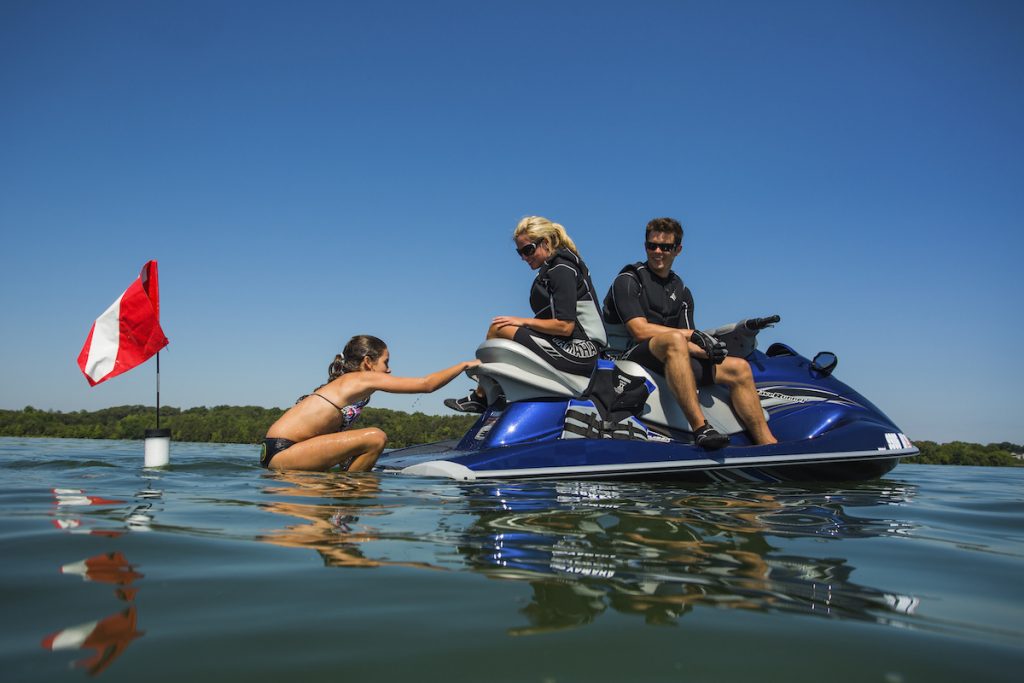
Components of a PWC
A Personal Watercraft (PWC) relies on several components to enable smooth handling, precise navigation, and efficient steering control on the water. In this section, we will explore the primary elements that make up a PWC's steering system, including the boat, engine, pump, impeller, jet nozzle, and propulsion system.
The boat serves as the foundation for all other components, ensuring the rider's comfort, stability, and safety while navigating through the water. Its design often features a sleek hull that allows for optimal maneuverability. The engine is an essential part of a PWC, providing power to the pump, which in turn, drives the watercraft on the water.
The pump serves as the heart of the propulsion system, responsible for drawing water from beneath the PWC and pushing it through the impeller at high pressure. This process adds momentum to the water, ensuring that the watercraft moves forward. The impeller, a vital component within the pump assembly, features a series of curved blades that accelerate the water and increase its pressure as it spirals out towards the jet nozzle.

Another crucial component is the jet nozzle, located at the rear of the PWC. This nozzle helps direct the pressurized water coming out of the pump, creating a strong jet of water that propels the watercraft forward. The jet nozzle is linked to the steering control system, which moves in the same direction as the handlebar or steering wheel when turned by the rider source.
The propulsion system, composing of the pump, impeller, and jet nozzle, is a distinguishing feature of PWCs, contributing to their unique steering and handling characteristics. Unlike traditional boats that rely on propellers, PWCs use this jet-driven method to achieve better maneuverability, control, and safety on the water source.
In summary, the various components of a PWC, such as the boat, engine, pump, impeller, jet nozzle, and propulsion system, work together to enable smooth steering control and a fun and safe experience while riding on the water.

Safety Measures When Using a PWC
When operating a personal watercraft (PWC), it is crucial to prioritize safety. One essential safety measure is wearing a life jacket or personal flotation device. This ensures that if the rider falls into the water, they remain afloat and reduce the risk of drowning.
Before using a PWC, it is highly recommended to complete a boating safety course. Many jurisdictions require completion of such a course before operating a PWC. These courses educate riders on safety measures, local boating regulations, and proper handling of the watercraft.
Navigation is another critical aspect of PWC safety. Operators should be aware of their surroundings when riding and adhere to signs and markers. It is important to maintain a safe distance from other watercraft, swimmers, and obstacles in the water. Utilizing navigation tools, such as charts or GPS systems, can greatly enhance situational awareness and reduce the likelihood of accidents.
Additional safety precautions to consider when using a PWC include:
- Ensuring the watercraft is in good working condition before use
- Avoiding overloading the PWC as it may affect handling and cause accidents
- Being mindful of environmental conditions, such as weather or water currents
By following these safety measures and staying informed about proper PWC safety practices, riders can minimize risks and enjoy a safe and thrilling experience on the water.
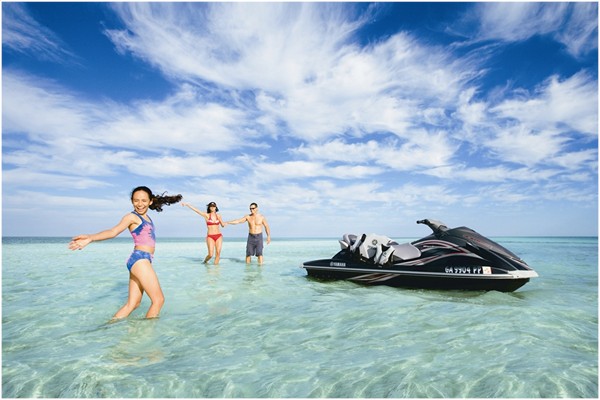
Pwc Propulsion and its Role in Steering
Personal Watercraft (PWC) steering relies primarily on the propulsion system, which mainly consists of a jet drive. The jet drive uses a combination of engine power and water propulsion to provide smooth and effective steering control. In this section, we will discuss the role of power, propulsion, jet propulsion, and jet drives in PWC steering.
Engine power is a crucial element for PWC steering control as it drives the water propulsion system. Most PWCs use an internal combustion engine to generate the necessary power to operate the jet drive. This engine enables the vehicle to move at varying speeds and respond to changes in throttle input, ultimately affecting steering and maneuverability.
The propulsion system in a PWC is responsible for converting engine power into navigational movement. Jet propulsion is a common method used in PWCs, where water is drawn in from underneath the watercraft and then forced out through a jet nozzle at high pressure. This jet nozzle creates a thrust that propels the PWC forward, providing the necessary force for steering control. The jet drive system is highly efficient in PWCs due to its ability to directly convert power into motion without the need for a propeller.
When it comes to steering control, the jet drives play a key role in directing the PWC's movement. The steering nozzle at the back of the PWC is responsible for controlling the flow of pressurized water ejected from the jet drive, thus affecting the direction and movement of the watercraft. As the steering control is turned, the steering nozzle changes its angle, redirecting the jet of pressurized water and causing the PWC to move in the desired direction.
In conclusion, PWC propulsion and its role in steering is an intricate interplay of engine power, water propulsion, and jet drive functionality. The efficient integration of these components ensures a smooth, precise, and enjoyable PWC experience for users, providing optimal control and navigation on the water.

Consequences of Improper Steering Control
Personal watercraft (PWC) require power to maintain steering control, as the steering depends on the engine being powered. Not properly understanding how to steer a PWC can lead to numerous hazards and potentially dangerous situations on the water.
Loss of control over the PWC can result from releasing the throttle, setting it to idle, or the engine shutting off. In these cases, the craft may continue along its previous path, regardless of the operator's attempts to steer. This can lead to collisions with other boats, docks, or obstacles in the water. It also poses a risk to the PWC operator, passengers, and surrounding swimmers or water sport enthusiasts.
Operators should be aware of their surroundings and plan their course accordingly. Being unable to respond to sudden changes in water conditions, encountering unexpected obstacles, or unexpected maneuvers by other watercraft increase the likelihood of accidents. Responsible PWC operation includes maintaining appropriate speed, distance from other vessels, and staying vigilant in congested areas.
Improper steering control may also contribute to environmental damage. PWCs can generate wakes that erode shorelines and disturb wildlife habitats. Inability to properly navigate the PWC can worsen these impacts, particularly in sensitive ecosystems.
In conclusion, understanding and maintaining proper steering control on a PWC is essential for ensuring the safety of the operator, passengers, and others on the water, as well as minimizing environmental impact.
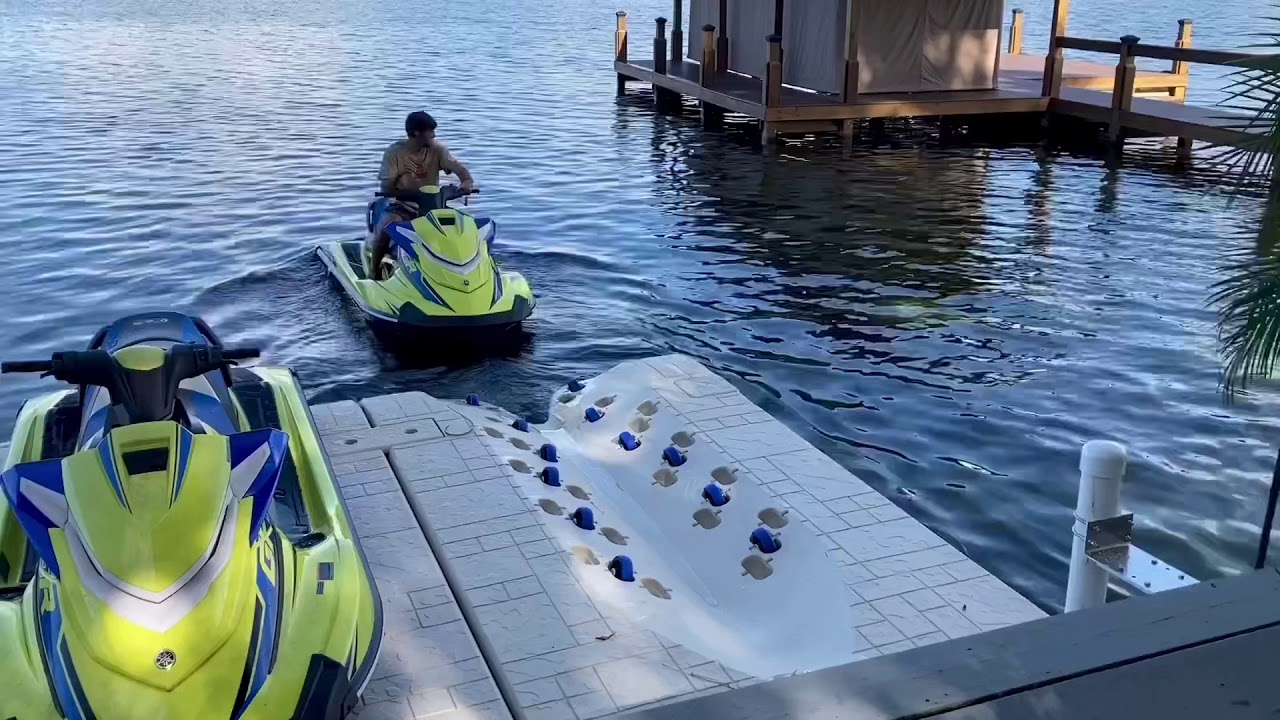
Understanding PWC Capacity and Docking
Personal watercraft (PWC) are designed with specific capacity limits in terms of passenger and weight capacity. Adhering to these limits is important for maintaining both the safety of the riders and the performance of the PWC. The capacity plate, found on all PWC, displays valuable information concerning the maximum number of passengers, weight restrictions, and horsepower. Riders should always verify the PWC's capacity plate before deciding on the number of passengers and cargo.
When it comes to docking a PWC, maneuvering smoothly at a controlled pace is essential. Typically, it is recommended to approach the dock at idle speed, which is the lowest throttle setting that allows the watercraft to move forward. This ensures that the PWC maintains enough momentum for steering while reducing the potential for damage upon contact with the dock.
As the PWC approaches the dock, the rider should turn the handlebars and direct the watercraft at a suitable angle - usually around 30-45 degrees - to promote a gentle gliding motion. The rider can make minor throttle adjustments to help control speed and steering while approaching the dock.
One of the key skills to master in docking a PWC is learning when to shift from a forward gear to a reverse gear. This process helps minimize the impact when the PWC touches the dock and prevents unwanted collisions. Remember that PWC steering systems rely on water thrust, so applying the throttle while turning the handlebars in the opposite direction of the dock assists in a smooth and controlled docking experience.
Practice, familiarity with the PWC, and understanding the capacity plate will help riders become more confident and proficient in handling their watercraft during docking and other maneuvers.

Role of Personal Skills in Steering Control
Operating a Personal Watercraft (PWC) requires a combination of technical understanding and personal skills to ensure safe and enjoyable navigation on the water. Steering control is a critical aspect of handling a PWC, and the skill level of the rider plays a significant role in achieving smooth and accurate maneuvering.
An essential skill for riders to develop is maintaining power while steering, as power is necessary for effective steering control on a PWC. Without consistent power, riders may lose control and struggle to perform precise movements on the water. Confidence in managing the power and understanding the engine's response to input allows for better control and a more enjoyable experience.
Additionally, mental focus and awareness contribute to effective steering control on a PWC. Riders must constantly observe their surroundings, consider the water conditions, and anticipate the PWC's reactions to different maneuvers. Developing a strong sense of spatial awareness can help riders quickly adapt to changing conditions and react accordingly.
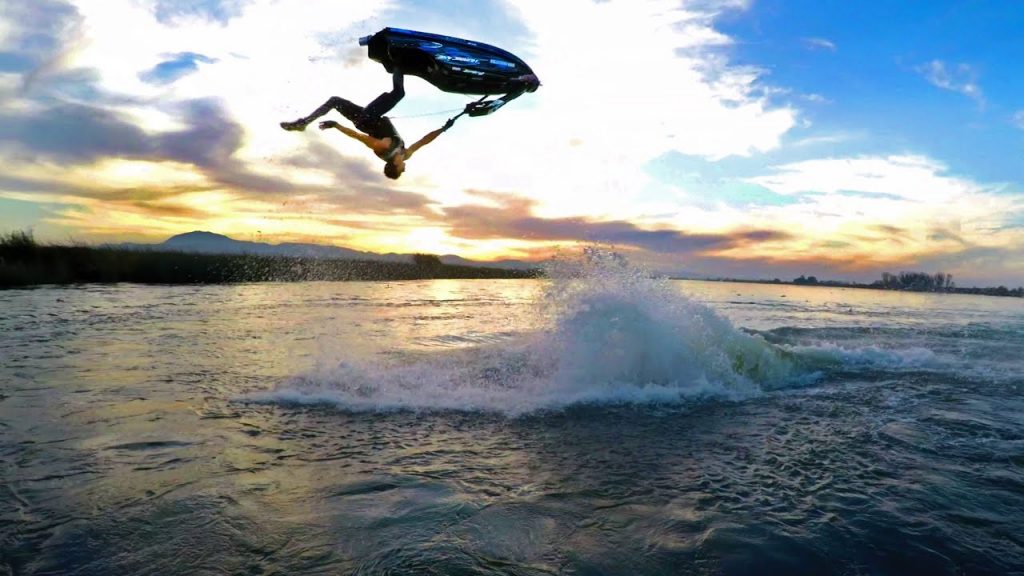
Finally, personal comfort and physical coordination contribute to a rider's ability to maintain steering control on a PWC. A rider should maintain a relaxed yet engaged posture and use fine motor control to operate the throttle, steering, and other controls. Developing strong hand-eye coordination and reflexes is crucial in responding to sudden changes and maintaining overall control.
In summary, the skill level of a PWC rider directly impacts their steering control, safety, and enjoyment on the water. By focusing on power management, mental focus, and physical coordination, riders can effectively navigate their PWC and confidently tackle various water conditions.
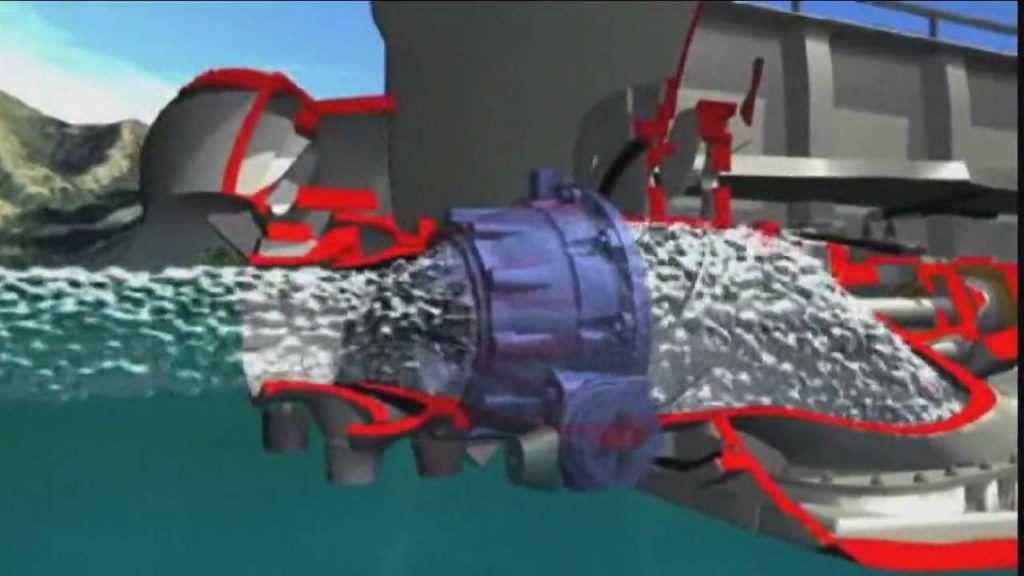
The Unique Role of Additional PWC Components
Personal Watercraft (PWC) have several unique components that differentiate them from other water vessels, such as boats. These components are essential for achieving smooth steering control and overall safety while maneuvering on the water.
One of the key components in PWC steering control is the use of a steering lanyard. This emergency feature requires the operator to wear a lanyard, which is typically attached to their life jacket or wrist. The lanyard connects the rider to an emergency on/off switch on the PWC's controls. If the operator becomes separated from the PWC for any reason, the lanyard is pulled, and the engine shuts off, preventing the craft from continuing to move without a rider in control.
In terms of functionality, PWC steering control is more closely related to a motorcycle than to a boat. When the operator turns the handlebars, the steering nozzle at the rear of the PWC turns in the same direction, directing a jet of pressurized water to propel and steer the craft. This system allows for precise maneuvers and quick responses to changing water conditions.

A unique feature to some PWC models is the incorporation of brakes. Traditional watercraft rely on shifting into reverse or turning off the engine to slow down. However, some PWC models have a brake system integrated into the handlebar controls, allowing riders to quickly and safely reduce their speed.
Another valuable feature found on many PWCs is the reverse function. This mechanism enables riders to back up and maneuver in tight spaces by redirecting the water jet. It is especially helpful when docking or navigating around obstacles.
The combination of these additional PWC components contributes to the unique and enjoyable riding experience of personal watercraft, providing riders with unparalleled control and safety on the water.
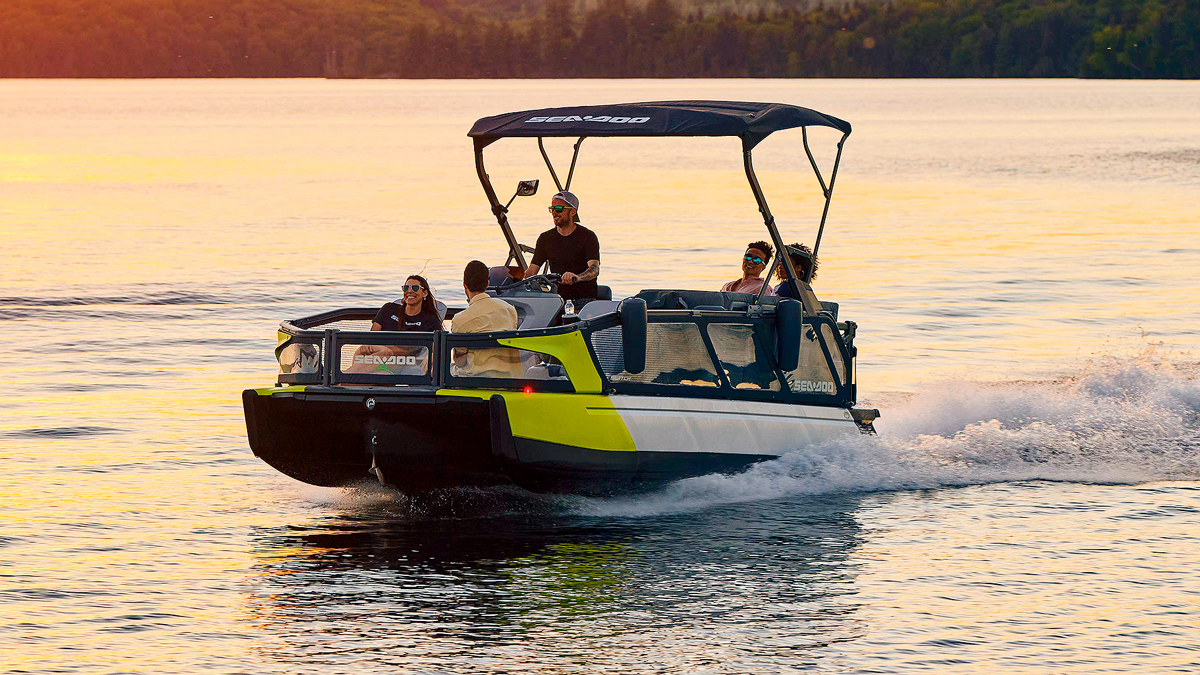
Compliance with Boating Laws
When operating a personal watercraft (PWC), it is crucial for the rider to adhere to the boating laws in their respective state or region. The majority of U.S. states, 42 out of 50, require riders to pass a mandatory boating safety course to obtain a certificate demonstrating competence in PWC operation. This not only ensures the safety of PWC users but also promotes responsible operation with respect for other waterway users.
Understanding how steering control works on a PWC is an essential skill for safe and lawful operation. Jet drives propel PWCs through water, providing a significantly different mechanism compared to boat engines and steering systems. As a result, steering control directly depends on the engine's power. If the throttle is released, or if the engine shuts off, the steering control will be lost, making it crucial for riders to maintain power to maneuver effectively.
Another critical aspect of complying with boating laws is understanding the minimum age required to operate a PWC. States have varying regulations for the minimum age, so it is essential to check local requirements when planning to use a PWC. This regulation ensures the safety of the operator as well as fellow waterway users.
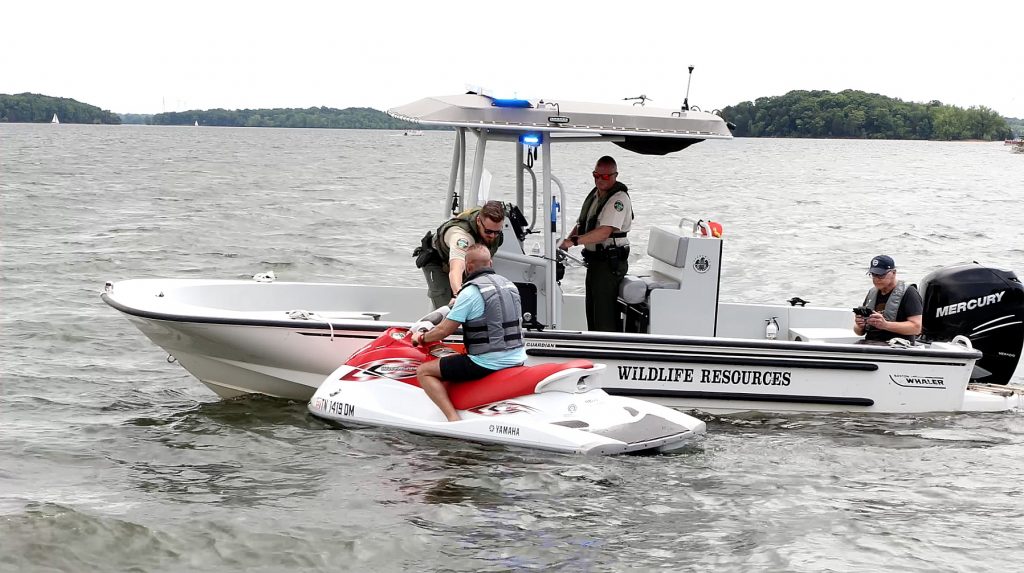
It is also important to know that some jurisdictions might require wearing life jackets or personal floatation devices while operating a PWC. This safety measure can save lives in case of accidents or other emergencies on the water.
In summary, compliance with boating laws plays a significant role in ensuring the safety and responsible operation of personal watercraft. By obtaining the necessary certifications, understanding steering control mechanisms, and adhering to age and safety equipment requirements, PWC operators demonstrate their commitment to responsible waterway usage.

Frequently Asked Questions
What is the key factor in maintaining steering control on a PWC?
The key factor in maintaining steering control on a PWC is having power applied to the jet propulsion system. Most PWCs rely on jet-drive propulsion, which means that you must have power in order to maintain control of the craft. When the engine is at idle or shut off, you may lose all steering control. [^1^]
How do you prevent loss of steering ability on a PWC?
To prevent loss of steering ability on a PWC, it's crucial to maintain power by keeping the throttle engaged while operating the vessel. As a PWC relies on jet-drive propulsion, losing power could result in a lack of control. Additionally, practice steering at varying speeds and in different water conditions to become more comfortable and proficient at controlling the PWC. [^2^]
What role does throttle play in steering a PWC?
Throttle plays an essential role in steering a PWC, as it controls the amount of power supplied to the jet-drive propulsion system. By adjusting the throttle, you can control the speed and directional changes of the craft. When the throttle is released or the engine is at idle, the PWC may lose steering ability. Therefore, maintaining a proper throttle setting is crucial for safe operation and steering control. [^4^]
How can a PWC operator minimize the risk of accidents on the water?
A PWC operator can minimize the risk of accidents by following a few safety guidelines:
- Always wear a personal flotation device (PFD) and ensure all passengers do the same.
- Operate at a safe speed, especially in congested areas or near the shoreline.
- Be aware of your surroundings and other vessels in the area.
- Use proper navigation rules and maintain a safe distance from other boats, swimmers, and fixed objects.
- Enroll in a boating safety course to learn about proper operation and safety procedures.
By adhering to these guidelines, operators can reduce the likelihood of accidents and ensure a safer experience on the water. [^5^]
Which techniques are essential for safe and proper docking of a PWC?
The following techniques are essential for safe and proper docking of a PWC:
- Approach the docking area slowly and at an angle, maintaining a safe distance from other vessels and obstructions.
- As you move closer to the dock, gradually reduce your speed and adjust your angle, so you're parallel with the dock.
- Once you're alongside the dock, gradually throttle down to bring the PWC to a stop.
- Secure the PWC to the dock using ropes or lines, ensuring it is properly fastened to prevent drifting away.
By practicing these techniques, you can safely and confidently dock your PWC. [^6^]
Are there specific federal regulations for operating personal watercraft?
Yes, there are specific federal regulations for operating personal watercraft. These regulations vary depending on the state you live in, so it's essential to be familiar with your local laws. Some common regulations include age requirements, mandatory boating safety courses, equipment requirements (such as PFDs), and restrictions on areas where PWCs can be operated. Always check with your local authorities to ensure you're following the appropriate rules and regulations for operating a PWC. [^7^]
Charlie is Editor-in-Chief of Sea Magazine